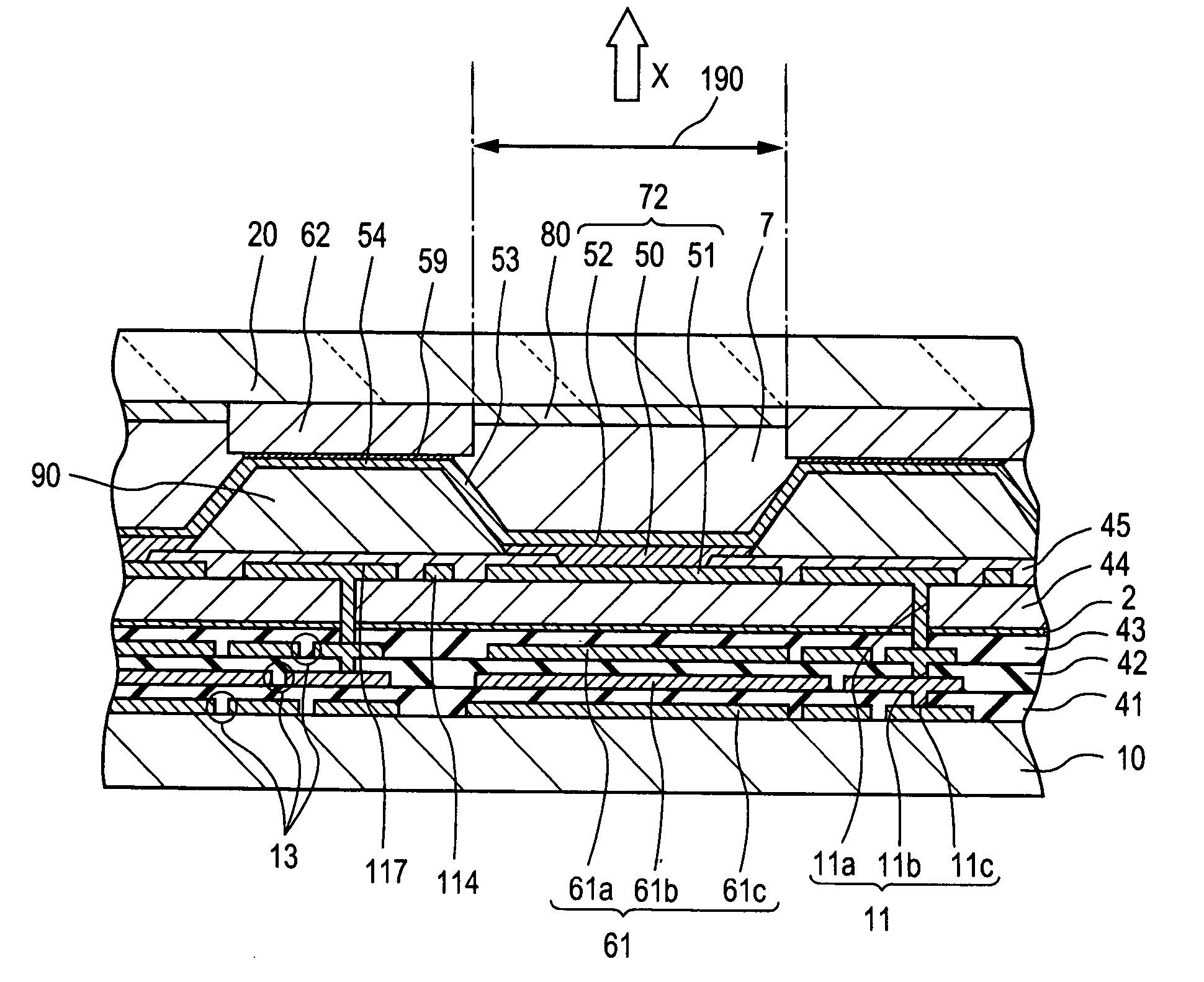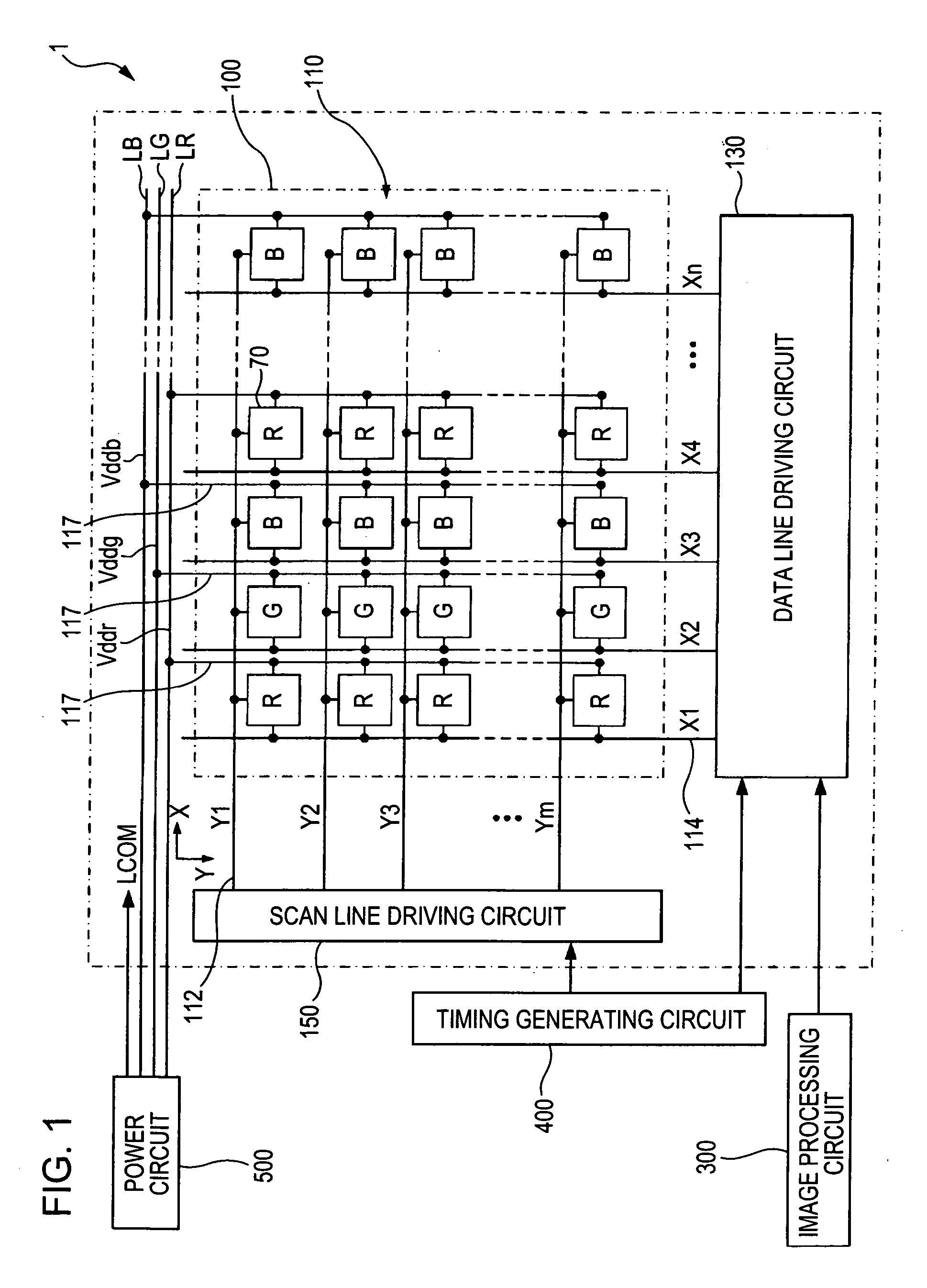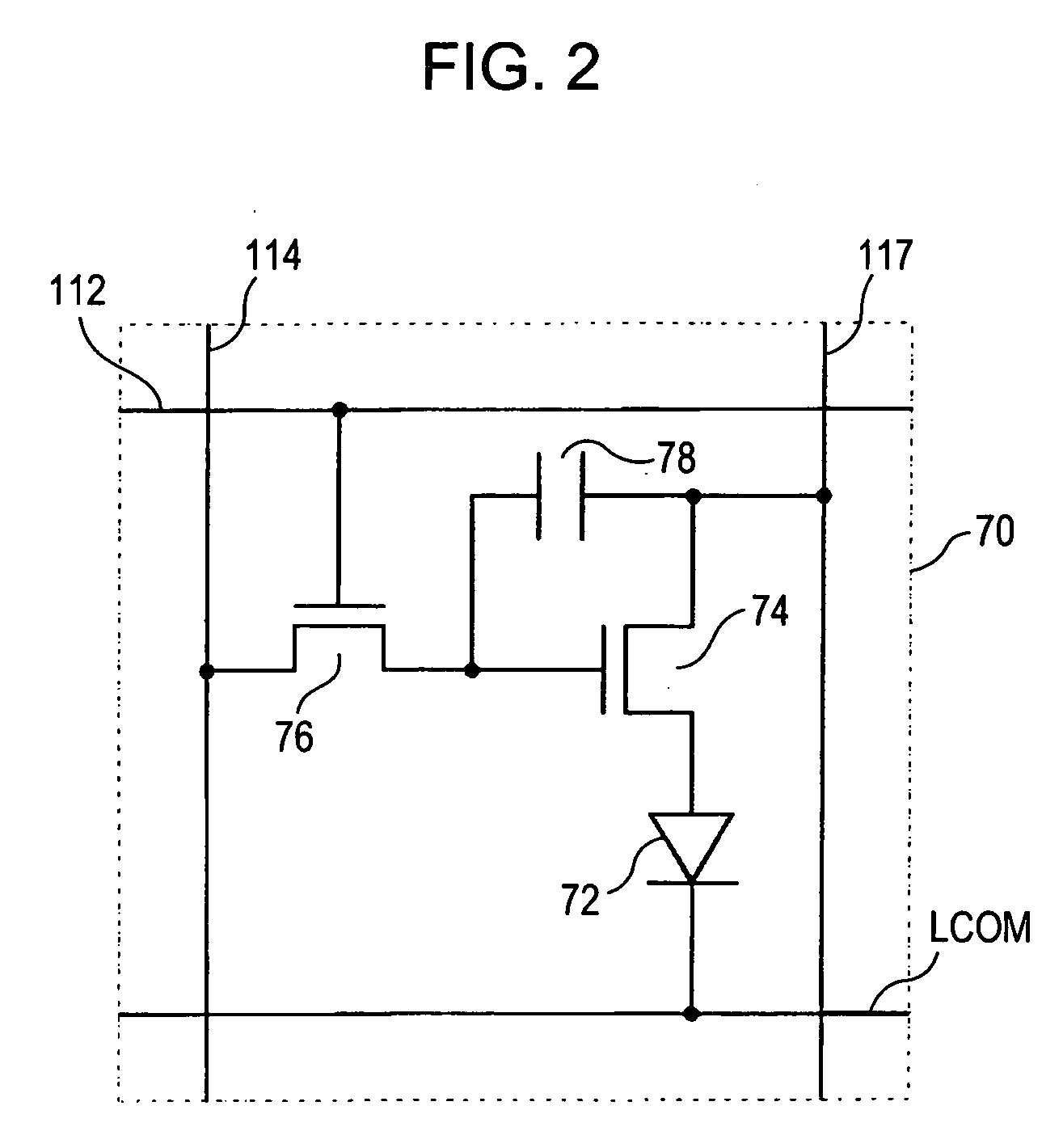Electrooptic device, method for producing the same, and electronic apparatus
a technology of electrooptic devices and electronic devices, applied in the direction of discharge tubes/lamp details, organic semiconductor devices, discharge tubes/lamp details, etc., can solve the problems of easy uneven brightness in the image display region, affecting the operation properties of electrooptic devices, and reducing the optical variation in the electrooptic conversion region. , the effect of reducing the optical variation in the electrooptic conversion region
- Summary
- Abstract
- Description
- Claims
- Application Information
AI Technical Summary
Benefits of technology
Problems solved by technology
Method used
Image
Examples
first embodiment
[0095] The overall structure of the organic EL device of a first embodiment and the structure of the pixel unit are first described with reference to FIGS. 1 to 10.
Overall Structure of Organic EL Device
[0096]FIG. 1 is a block diagram showing the overall structure of the organic-EL device of this embodiment. FIG. 2 is a circuit diagram showing the structure of a particular pixel unit.
[0097] In FIG. 1, an organic EL device 1, which is an example of the electrooptic device, has an organic EL panel 100, a power circuit 500, a scan line driving circuit 150, a data line driving circuit 130, an image processing circuit 300, and a timing generating circuit 400 as the main components.
[0098] The organic EL panel 100 has the number m (wherein m is a natural number of 2 or more) of scan lines 112 arranged in parallel to the X direction and the number n (wherein n is a natural number of 2 or more) of data lines 114 arranged in parallel to the Y direction orthogonal to the X direction. The s...
second embodiment
[0172] An organic EL device according to a second embodiment will now be described with reference to FIG. 11. FIG. 11 is a cross-sectional view similar to that of the first embodiment shown in FIG. 4. In FIG. 11, the components identical with those of the first embodiment shown in FIG. 4 are represented by the same reference numerals and the descriptions therefor are omitted.
[0173] As shown in FIG. 11, the light-scattering layer 80 of the second embodiment has a shape of a lens. Thus, the light generated in the organic EL element 72 can be focused through the light-scattering layer 80 in a perpendicular direction with respect to the second substrate. Thus, the light-extraction efficiency can be further increased. The lens-shaped light-scattering layer 80 is interposed between the first substrate 10 and the second substrate 20 so that the light extraction efficiency can be further increased compared to when the light-scattering layer 80 is provided outside the second substrate 20. T...
third embodiment
[0177] An organic EL device according to a third embodiment will now be described with reference to FIGS. 12 and 13. FIG. 12 is a plan view showing a second auxiliary wire of the third embodiment. FIG. 13 is a cross-sectional view of a pixel unit of the third embodiment taken along line XIII-XIII in FIG. 12. In FIGS. 12 and 13, the components similar to those of the first embodiment shown in FIGS. 1 to 10 are represented by the same reference numerals, and the descriptions therefor are omitted.
[0178] As shown in FIG. 12, the organic EL device of the third embodiment has a fine second auxiliary wire 62 has fine lines 164 in the opening region 190 of the organic EL element 72.
[0179] The second auxiliary wire 62 contains a low-reflection material and has a particular planar pattern that at least partly covers the non-opening region of the pixel unit 70. In this manner, the second auxiliary wire 62 also serves as a black mask or a black matrix. In addition, as shown in FIGS. 12 and 13...
PUM
 Login to View More
Login to View More Abstract
Description
Claims
Application Information
 Login to View More
Login to View More - R&D
- Intellectual Property
- Life Sciences
- Materials
- Tech Scout
- Unparalleled Data Quality
- Higher Quality Content
- 60% Fewer Hallucinations
Browse by: Latest US Patents, China's latest patents, Technical Efficacy Thesaurus, Application Domain, Technology Topic, Popular Technical Reports.
© 2025 PatSnap. All rights reserved.Legal|Privacy policy|Modern Slavery Act Transparency Statement|Sitemap|About US| Contact US: help@patsnap.com



